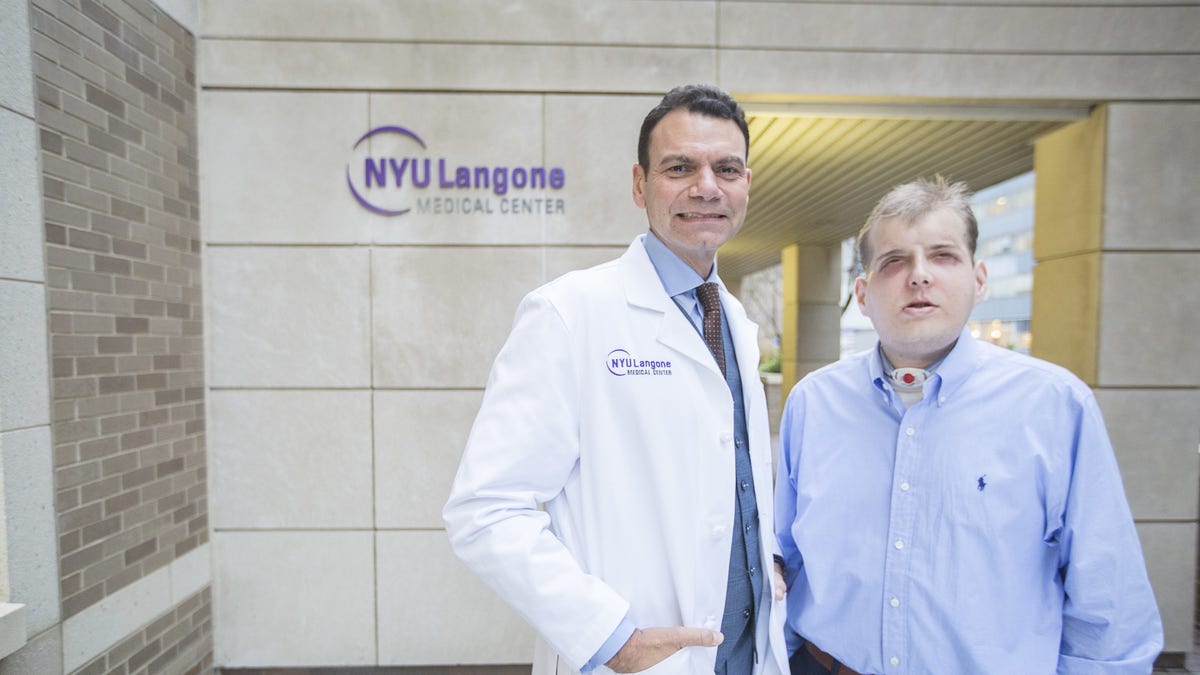
Dr. Rodriguez and Patrick Hardison on November 12, 2015. (PRNewsFoto/NYU Langone Medical Center)
Patrick Hardison, a Mississippi firefighter, endured 71 operations before landing on Dr. Eduardo Rodriguez’s operating table three months ago. He needed a new face, and the Cuban-American surgeon from NYU Langone Medical Center deemed him an “ideal patient.”
Rodriguez warned him that the chance of success was 50 percent. “You have to understand: If it were to fail, there is no bailout option,” Dr. Rodriguez told him, according to New York magazine. “You would likely die. This is a procedure that is all or none,” he added.
The volunteer firefighter and father of five grasped the opportunity and now, 12 weeks later, he is gradually owning his new face and relearning to smile.
Hardison lost his face when he got trapped in a fire in a mobile home blaze back in Sept. 5, 2001. The blaze melted his mask and burned his face.
The transplanted face on Hardison, 41, belonged to a 26-year-old bike messenger named David Rodebaugh who died in a July 2015 accident in New York City. It is the most extensive face transplant ever performed in the United States.
Hardison is the 30th patient to receive a facial transplant and doctors are now cautiously waiting for his rejection. Five patients have died after their body rejected the new face.
Pain is also a factor, especially because Hardison struggled with addiction to painkillers before. One of the conditions for the surgery was that he committed to not seek narcotics from any physician but Rodriguez’s team, which now meticulously rations Hardison’s dose of Oxycodone.
“I can live with the pain,” Hardison assured the NY magazine reporter.
The hospital paid for the transplant operation, which included attaching four bone segments to Hardison's skull, as anchors to prevent the face from drooping.
The lower part of his face remains swollen, but Rodriguez said that will go away in a few months. With his new eyelids and more surgery, he's expected to regain a normal field of vision for the first time in more than a decade. He will have to continuing taking medications to prevent his body from rejecting the transplant.
Eventually, "a casual observer will not notice anything that is odd" in Hardison's new face, which will blend features of his original face and the donor's, Rodriguez said.
Hardison said his new face has already made a difference when he goes outside.
"I used to get stared at all the time, but now I'm just an average guy," he said.
He's been told he can't return to firefighting because of insurance concerns, but he has another plan: motivational speaking or something similar, perhaps for wounded veterans.
His message? "Just how there is hope."
With reporting by the Associated Press.
